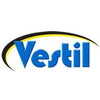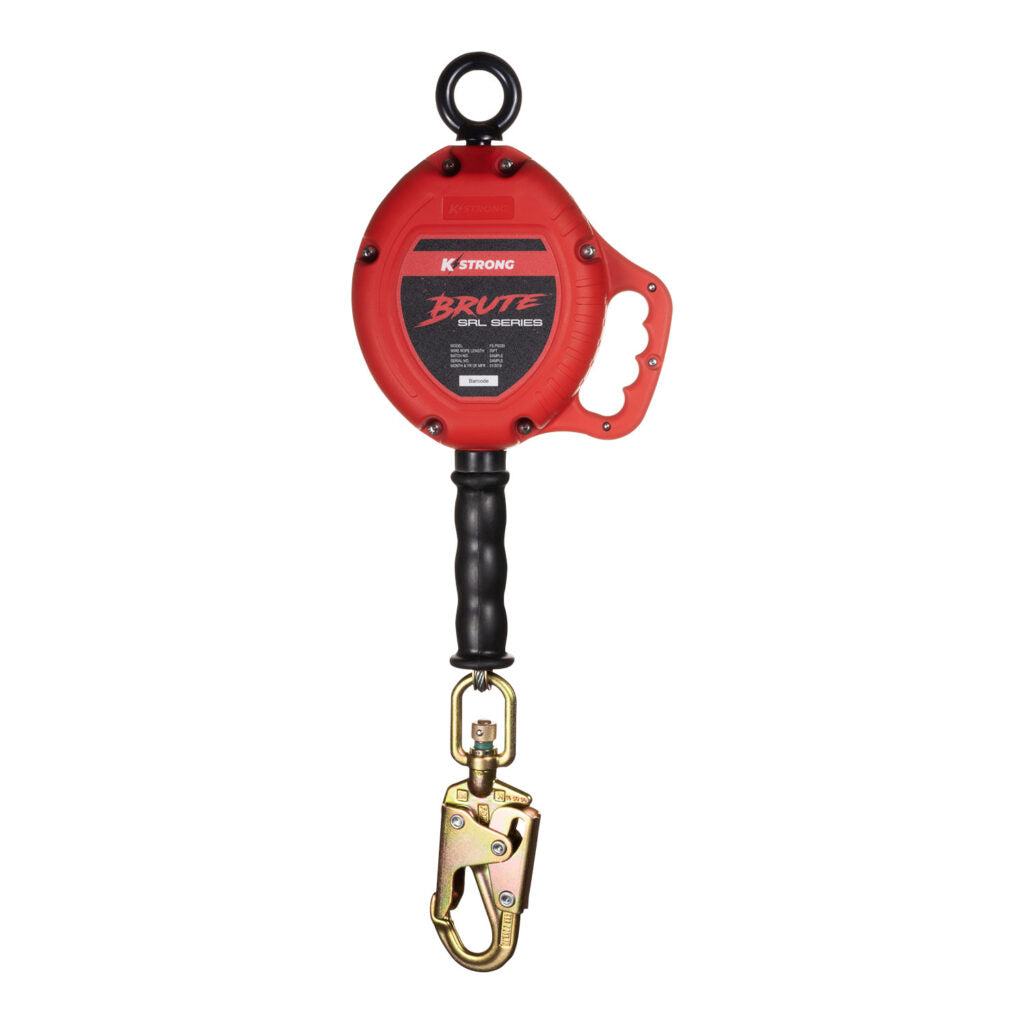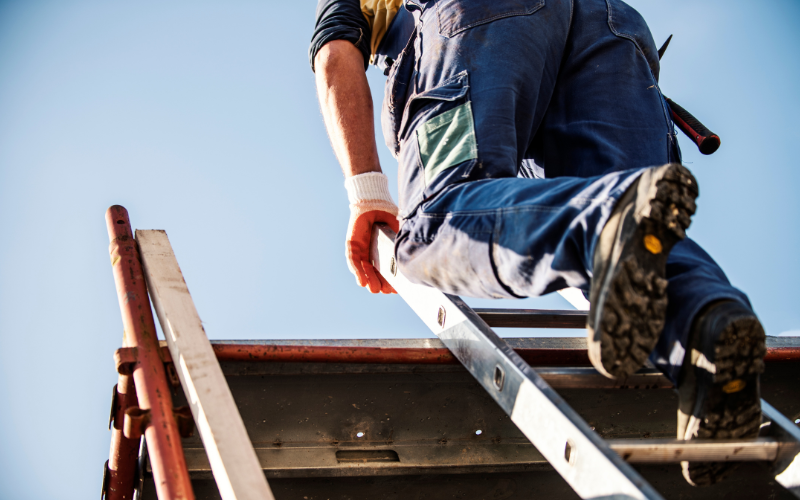Ladders are one of the most basic tools used today, but still form the foundation of a solid toolkit across industries such as construction, warehousing, and logistics.
The ladder might be one of the simplest tools, but there’s a reason it’s stood the test of time. But over the past few decades, the humble ladder has undergone some big changes in design thanks to the introduction of new safety standards, developments in material science, and the integration of smart technology.
In 2025, understanding the contemporary ladder market is crucial, no matter if you’re a contractor on a jobsite, a warehouse supervisor controlling inventory, or a homeowner needing to undertake simple DIY tasks.
EVOLVING LADDER TYPES & APPLICATIONS
Many different types of ladders exist to combat a range of tasks. For example, traditional step ladders are still relied upon for common household tasks that do not require excessive heights, while extension ladders are designed to access high ground such as roofs and tall buildings. The former are common in homes due to their self-supporting design and small footprint, while the latter are more often seen on building sites and in warehouse facilities.
More recently, the market has seen an increase in the popularity of multi-position ladders, also known as convertible ladders. Due to their ability to easily change configuration, their flexibility makes them ideal for electricians, HVAC technicians, and general contractors alike – delivering optimal versatility from a single unit.
Platform ladders are also becoming the go-to choice in warehouses and retail environments due to their large standing area that offers extra comfort and stability during extended use.
Then we have fixed ladders, that are designed for permanent installation where long-term access is required, for example, silos and tanks, or permanent roof access.
This list of ladder types is not exhaustive. Check out of complete range HERE!
BENEFITS OF USING MODERN LADDER MATERIALS
The materials used to manufacture ladders have also changed, with the need for lighter, stronger, and electrically safe models demanding it. Aluminum is still the most widely used ladder construction material, largely due to its lighter profile and natural durability against corrosion. Additionally, aluminum ladders are easier to transport, making them suitable for frequent repositioning.
To combat the requirements of electrical work, fiberglass ladders have come to the rescue. Although not as lightweight as aluminum, they achieve the same sturdiness and strength, but they are not conductive; therefore suitable for electricians and utility workers.
Finally, there are steel ladders. Not particularly portable due to their heavy nature, this material is more commonly seen in fixed, industrial ladders where maximum strength and load capacity is required.
2025 SAFETY REGULATION & STANDARDS
In 2025, ladder safety is in the spotlight as OSHA and ANSI revise their standards to address issues discovered in new research and the workplace since the last round of updates. OSHA remains vigilant in enforcing its standards related to the use of ladders, especially in construction and industrial settings. These regulations address details such as spacing between rungs, the angle of the ladder, fall protection, and weight limits.
ANSI has continued its ladder service grade ratings, from light household to extra-heavy industrial types, encouraging users to select ladders based on their bodyweight, plus the tools or materials they will be carrying.
Today, manufacturers identify the rating on every ladder they engineer, which helps end-users see, at a glance, what they are purchasing before they even so much as touch it.
CUTTING-EDGE TECHNOLOGY IN LADDER INNOVATION
Probably one of the most important changes in the ladder industry is the integration of smart technology. Many ladders are simply more than traditional ladders in 2025, as they can now be equipped with digital features that enhance their safety and usability.
In addition some of the new ladders come with built-in load sensors that can alert users is load ratings are exceeded. Others come with tilt sensors that alert users if the ladder is not positioned correctly or at a safe angle.
Bluetooth connectivity can now connect mobile devices to track the usage of ladders, storing data for the dates for inspections etc. Mobile devices can also provide guides for setting up ladders correctly, even using augmented reality in more complex fields.
These types of innovations are continuing to push the boundaries and helping companies mitigate workplace injuries, enforce compliance, and improve current asset management systems.
MAINTENANCE & EXAMINATION PRACTICES
Another important factor to consider when owning a ladder is maintenance and examination, particularly in high-usage rate industries such as construction, where site safety protocols should incorporate regular inspections.
Users should check ladders for cracks, bent rungs, loose fittings, and any other signs of wear and tear prior to each use.
In 2025, many organizations are leveraging options such as digital inspection checklists or QR code tagging systems that track inspection history for each ladder.
Additionally, keeping your ladders clean and storing them in a dry, climate-controlled area, free of oil, paint, or debris will also increase their lifespan.
TIP: For extension and multi-position ladders, lubricating the hinges and locking mechanisms helps to ensure smooth operation and reduce the risk of mechanical failure in the long term.
GETTING THE RIGHT LADDER FOR THE JOB
There are many critical factors that go into choosing the right ladder for the job. The first is height – users must always choose a ladder that provide enough height so that they don’t have to stand on the top rung.
When it comes to extension ladders, considerations include the angle the ladder needs to rise at more or less on the horizontal plane and the amount that needs to overlap each other between sections.
The second consideration is load capacity, which equals the user plus anything else they may carry (tools, materials, etc.) during use. Never exceed the weight limit set by the ANSI rating system.
Thirdly, the environment in which you are working. For jobs that can expose you to electricity, fiberglass ladders are the safest choice. Aluminum may be a better option if mobility is key. Facilities that require permanent access to roofs or equipment may need fixed ladders.
Lastly, think about how often and how long it will be used. For those climbing ladders every day, they want to pay for higher-duty ergonomic models with belts, but for those using ladders occasionally, there are less expensive options.
LADDERS FROM LIFTING EQUIPMENT STORE USA
At Lifting Equipment Store, we understand the significance of providing a range of ladders that cater to different requirements. We offer everything from high-quality commercial and domestic extension ladders and multi-position ladders to platform ladders and OSHA-compliant fixed ladders.
Safety, durability, and compliance are king, and we only partner with those manufacturers that match our ethos. So whether you’re overseeing a construction site, maintaining a place of business, or cleaning windows, our ladders perform – and that’s a promise.
THE FUTURE OF LADDERS
Overall, ladders in 2025 are more intelligent, safer, and have more features than ever before. Modern ladders are engineered with greater awareness for safety regulations, from better materials, and integrated new technologies.
Choosing the most appropriate ladder is not as simple as you think, there are many factors. With the workplace constantly evolving, the equipment you depend on should too, and when it comes to ladder technology, we, at Lifting Equipment Store, bring you optimal safety and choice.
Check out our full range today and tackle your next ask at height with confidence!






















